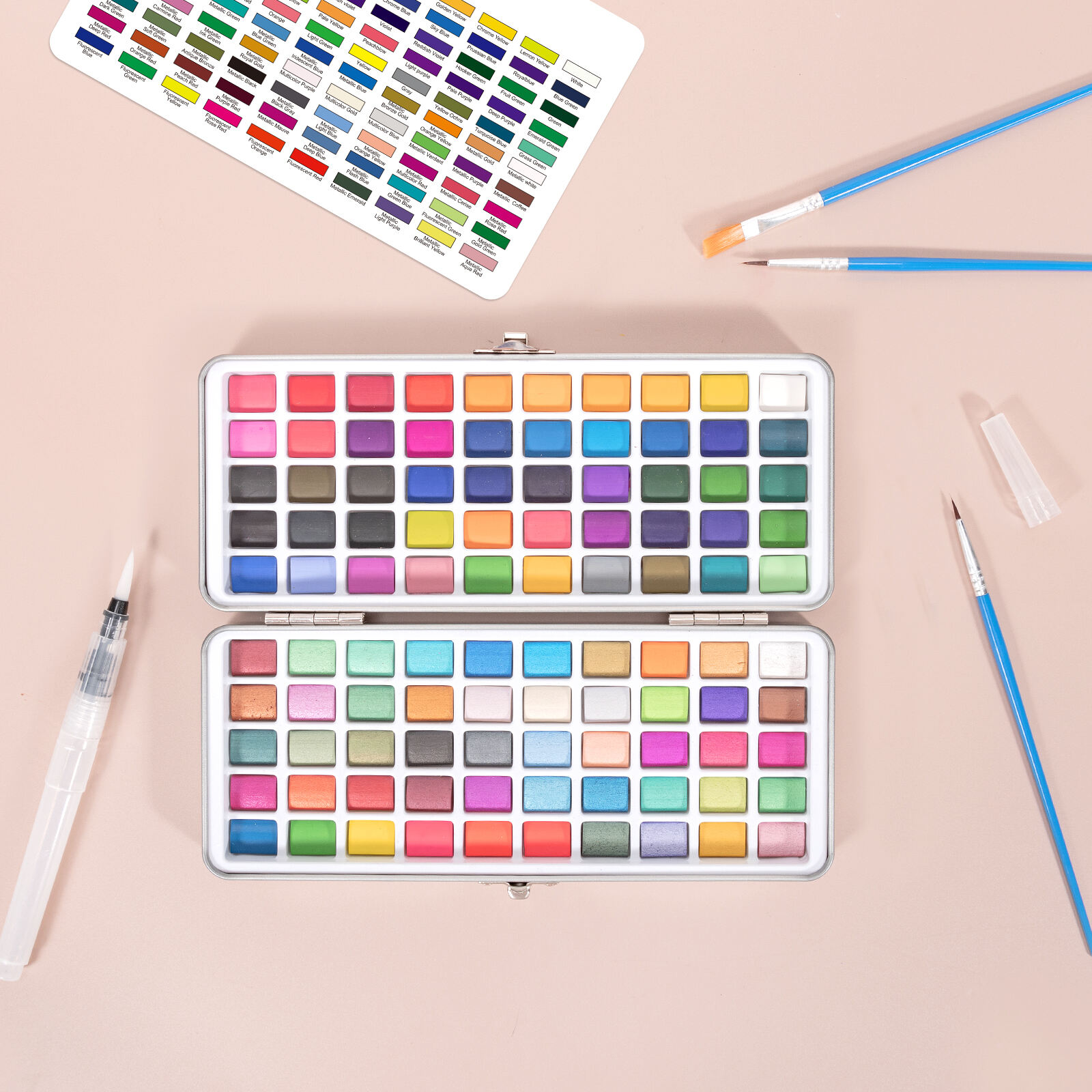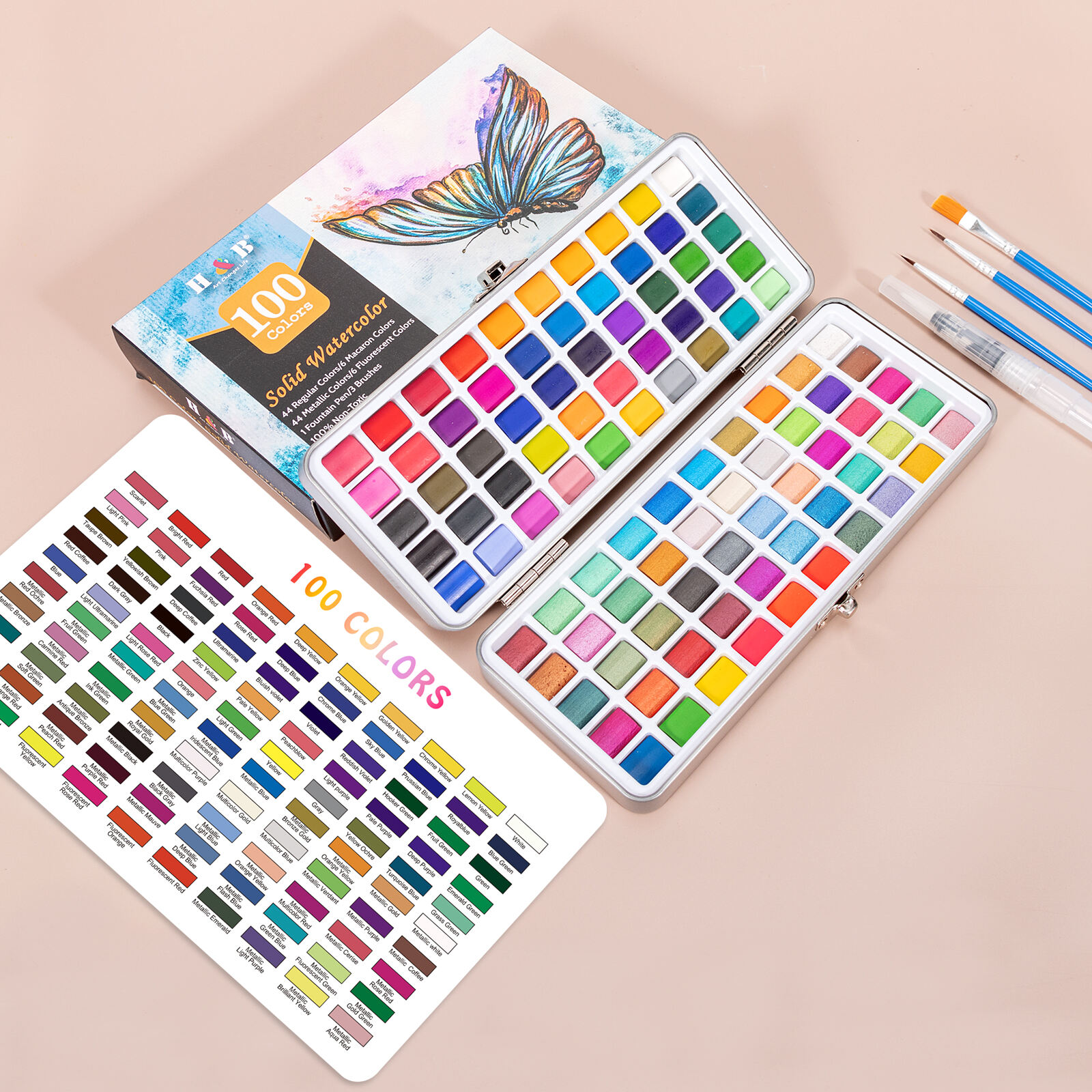Understanding Different Paint Types for Various Needs
Water-Based Paints: Latex and Acrylic Formulas
Water based paints mainly come in latex and acrylic varieties and are pretty good for the environment plus easy enough to work with. They have low levels of those harmful VOCs so they're better for inside spaces where people live and breathe. Plus these paints dry fast which saves time when working against deadlines. For home walls particularly in living areas and kids' rooms where air quality matters most, latex works great because colors stay vibrant without turning yellow over time. Acrylic stuff though can go anywhere really indoors or out since it sticks well to almost anything from wooden beams to metal surfaces even plastic materials. That kind of flexibility explains why so many folks choose acrylic when they need something that will last through seasons and weather changes without peeling away.
Oil-Based Options: Alkyd and Enamel Durability
Oil based paints like alkyd and enamel types are known for being tough and lasting a long time on surfaces. Alkyd tends to go on smoother and sticks better to what it's applied to, whereas enamel gives off that hard glossy look that just won't fade away no matter how much wear and tear comes along. These kinds of paint really shine (pun intended) in places where things get beat up regularly, think door frames around front doors or kitchen cabinet fronts that everyone opens and closes all day long. The downside though? They take forever to dry compared to water based stuff, plus they release those VOC chemicals into the air during application. That means good airflow is absolutely essential when working with them inside homes or workshops. Still, despite needing patience during drying periods and proper ventilation setup, many contractors still reach for oil based formulas whenever they need something that will hold up against constant use without showing signs of age anytime soon.
Specialty Paints: Chalkboard, Metallic, and Textured Finishes
Specialty paints meet both looks and practical needs, providing options such as chalkboard paint, metallic sheens, and textured wall treatments. Chalkboard paint works great in creative areas where people want surfaces they can write on anytime. Think about offices needing brainstorming boards, kitchen nooks for grocery lists, or kids' bedrooms turned into interactive play spaces. Metallic paints give rooms a bit of sparkle, which makes them stand out as accent walls or special features in home decor projects. Textured coatings help cover up wall flaws while giving surfaces dimension and character. These finishes aren't just visual either since they feel different under the fingers, adding another layer to interior design. From small apartments to big office buildings, these specialized paints let designers get creative without breaking the bank.
Primer Essentials: Creating the Perfect Base Layer
A good primer sets things right before any painting job gets underway, helping the final coat stick where it needs to and giving that nice smooth look without flaws. There are different kinds out there too – oil based ones work better on certain materials while water based options suit others depending on what surface we're dealing with. For stuff like new drywall, old wooden furniture or metal surfaces, applying primer makes all the difference. It helps paint grab onto those tricky spots, stops it from flaking off later on, and sometimes covers up stubborn stains or leftover color marks from before. Beyond just getting the paint to go on smoothly, primers actually help prolong how long that fresh coat lasts and keeps looking vibrant over time. That's why most pros always start with primer first when tackling serious painting projects at home or in commercial settings alike.
Assessing Your Painting Project Requirements
Indoor vs. Outdoor Paint: Key Performance Differences
Picking between indoor and outdoor paints really matters because they work differently in practice. Most indoor paints focus on looking good with smooth surfaces and bright colors that stand out on walls. Outdoor stuff needs to handle harsh conditions though, fighting off things like sun damage and mold growth over time. Getting this right makes all the difference when painting inside versus outside spaces. The wrong choice can lead to peeling and fading much sooner than expected. And let's face it nobody wants to keep spending money on touch ups every few months just because they used the wrong type initially.
Furniture and Cabinet Paint Considerations
When it comes to painting furniture and cabinets, there are definitely some tricky spots to watch out for. People often overlook how tough these surfaces can be on paint, especially when they get used daily or exposed to moisture. For wood pieces that see a lot of action, we need something that won't wear away too quickly. Chalk paint gives that nice matte look many folks want nowadays, though it's not always the toughest option around. Enamel paints tend to hold up better in the long run, which makes them great for kitchen cabinets or anything near water sources. Before grabbing the brush though, proper prep work matters a ton. Sanding down rough areas and applying primer first really makes all the difference between a job that lasts years versus one that starts flaking within months. Trust me, skipping these steps usually leads to frustration later on.
Artistic Applications: Canvas vs. Decorative Surfaces
When artists work on canvas compared to decorative surfaces, they need to think about different paint needs. Most canvas work uses acrylics because they dry fast and can be mixed in so many ways. Oil paints are another story though - they give those deep colors that just pop and last forever, which is why galleries love them for serious artwork. For things like walls or furniture, there's more to consider than just picking paint. The right kind matters a lot, plus getting the surface ready properly before painting makes all the difference. A good primer helps everything stick better without peeling later. Choosing the correct paint isn't just about looks either; it affects how long the piece will stay beautiful without fading or cracking over years.

Navigating Paint Finish Options Effectively
Matte Finish: Hiding Imperfections in Low-Traffic Areas
Picking out the right paint finish makes all the difference when it comes to getting both looks and practicality just right in any space. Matte finish paints don't have much shine at all, which gives walls a really elegant, classic feel. People love them especially in bedrooms where there's not so much foot traffic. What works well about matte finishes is how they hide those little wall flaws we all have somewhere - maybe some patch jobs here and there or texture inconsistencies. That's why so many homeowners go for matte in their living spaces. But let's face it, these finishes aren't exactly tough cookies. Cleaning them requires care. Grab a slightly wet cloth and some gentle soap solution instead of anything harsh. Rub lightly and avoid scrubbing too hard otherwise you might end up damaging the finish completely. Taking this extra step keeps things looking fresh without sacrificing that beautiful matte appearance that matches pretty much every decorating style around.
Satin Sheen: Balancing Cleanability and Aesthetics
Satin sheen paint sits right in the sweet spot between looking good and working well, which is why so many people pick it for their living spaces when they want something that does both. What makes this finish stand out? Well, it has that gentle shimmer that looks great on walls but still wipes down easily compared to matte paints that just eat up every smudge. Spaces like living rooms and kitchens really benefit from this kind of paint because these areas get cleaned all the time thanks to constant foot traffic. Plus, satin works wonders not just on walls but also cabinets and wooden trim around the house, giving everything a cohesive look without having to match different finishes everywhere. Homeowners who care about maintaining their decor while keeping things manageable tend to gravitate toward satin sheen since it holds up pretty well over time and doesn't sacrifice style for practicality.
Gloss/Semi-Gloss: High-Durability Solutions for Trim
Gloss and semi-gloss finishes really stand out when it comes to lasting power and how easy they are to clean, which makes them great choices for things like trim work, moldings, and those fancy architectural details people love adding these days. The way light bounces off these shiny surfaces can actually make a room feel brighter too, drawing attention to whatever features or furniture happen to be nearby. What's more, these coatings handle daily bumps and scrapes pretty well, so they last longer than many other options. That's why we often see them used in places where folks walk by all day long like hallways or around doors where fingers get left behind. Sure, the glossy look does tend to show every little scratch or fingerprint, but there's something about that polished appearance that just elevates the whole look of a space while still standing up to regular maintenance needs. For anyone dealing with spaces that need frequent wiping down, gloss finishes offer both looks and practicality rolled into one package.
Creating Harmonious Color Schemes
Color Psychology for Mood Creation
The way colors affect our feelings inside a room is something designers think about quite a bit when planning interiors. Different hues actually do change how we feel in a space. Take blue for instance it tends to make people feel relaxed and peaceful which works great in bedrooms but not so much in areas where activity is needed. On the flip side, reds boost energy and excitement making them good picks for kitchens or kids' play areas where movement happens naturally. Interior design research backs this up showing that picking the right colors matters a lot for mental health over time. Knowing what each shade does allows homeowners to adjust their living spaces according to what they need from each room, whether it's calming vibes or stimulating environments.
Testing Undertones in Natural vs. Artificial Light
Getting to know those hidden undertones in paint colors matters because they really do change based on how the light hits them. Sunlight tends to show what color actually is, whereas indoor lights tend to mess with our perception, sometimes making colors look totally different after we've painted the room. Wanting the right match? Testing out samples in different lighting makes sense. Put some swatches on the wall and check them throughout the day when lighting changes naturally. There are plenty of ways to get a better idea about colors these days. Some folks swear by old fashioned paint chips, others prefer smartphone apps that simulate different lighting scenarios. Either way, taking time to evaluate options properly helps avoid costly mistakes down the road.
Coordinating with Fixed Elements and Décor
Matching paint colors to things that stay put in a house like floors, counters, and furniture really matters when trying to make colors work together throughout living spaces. Look around at what's already there first, then pick out colors that go well with those fixed parts. Take wood tones for example warm grays and beiges tend to look great behind wooden cabinets or trim, whereas bold colors like red or yellow can draw attention to certain areas of a room. Colors like burnt orange or dark blue work wonders as accent pieces too. When someone takes the time to match up all these different elements properly, the whole space ends up feeling put together rather than random. People often find their homes not only look better but feel more comfortable once everything matches up visually.
Evaluating Paint Quality and Application Factors
Interpreting Coverage Rates and Dry Times
Getting a handle on coverage rates matters when figuring out how much paint we actually need for any given job. Simply put, coverage rates tell us how much surface area one can expect from a certain quantity of paint, usually expressed as square feet per gallon. Knowing this helps determine what needs buying and keeps costs under control during budget planning. Then there's the drying time factor which impacts overall project schedules because nobody wants to wait forever between coats or finish work. Quick drying options speed things up no doubt, though they often require extra attention during application to avoid those annoying streaks. Most standard paints generally cover somewhere between 250 and 400 square feet per gallon depending on their type. Paying attention to these numbers makes all the difference when it comes to proper planning, staying within budget constraints, and ending up with something that looks good instead of just being slapped on.
Weather Resistance Ratings for Exterior Paints
When painting outside surfaces, the quality of paint really matters because it affects how well it stands up against the weather. Weather resistance ratings basically tell us if a paint can handle rainstorms, hot sun, and those harmful UV rays that damage colors over time. This matters a lot for homes in places where winters are harsh or summers get scorching hot. Good quality paints usually come with features like UV protection so they don't fade quickly, plus some flexibility to deal with temperature changes that cause materials to expand and contract. Studies indicate that spending a bit more on better weather resistant paints pays off in the long run. Most people find their investment lasts around five years or more before needing repainting, whereas cheaper options might need touching up much sooner. So when shopping for exterior paint, look at what kind of climate the area typically experiences and pick something suitable for those conditions if wanting longer lasting results.
Cost vs. Longevity: Professional-Grade vs. Budget Options
When it comes down to choosing between pro grade paints and cheaper alternatives, most people worry about getting value for money and how long the paint will last. The premium stuff usually costs more upfront but pays off over time because it performs better and lasts much longer before needing touch ups. Take budget paints for instance they look affordable at first glance but often end up costing more in the long run since they wear out faster and need extra coats. Many painters we've talked to swear by certain name brand products that just work better across different surfaces and maintain color intensity far longer than store bought options. If someone wants to save cash without compromising quality, looking at what experienced contractors actually use on job sites can be really helpful. Balancing what experts suggest against what fits within our own financial limits helps make sure whatever gets painted stays looking good for years rather than months.
FAQ
What are the benefits of water-based paints?
Water-based paints, including latex and acrylic, are environmentally friendly, contain low VOCs, and dry quickly, making them ideal for indoor use.
Why should I use a primer before painting?
Primers enhance paint adhesion, prevent peeling, and hide stains or previous colors, ensuring a smooth and long-lasting finish.
How can I choose the right paint finish for my room?
Consider the room's usage and traffic; matte finishes work well in low-traffic areas, while satin and gloss offer durability and ease of cleaning for high-traffic zones.
What factors should I consider for exterior paint?
Select paints with high weather resistance ratings to withstand local climatic conditions, such as UV exposure and temperature fluctuations.


